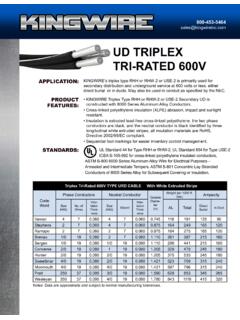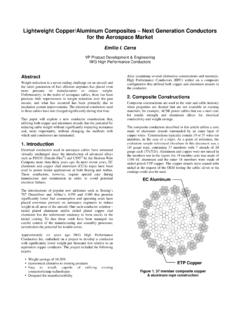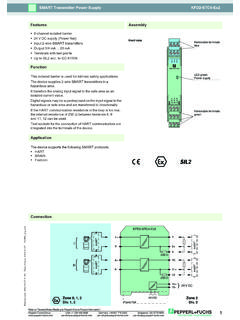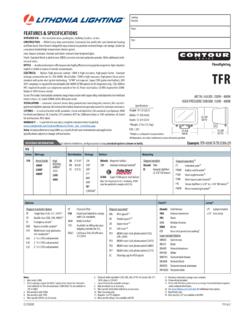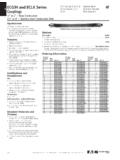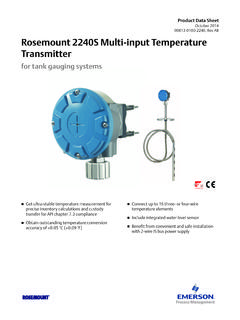Transcription of Annealing of Aluminum Conductors - pdc-cables.com
1 Annealing of Aluminum Conductors The minimum tensile strength of Aluminum and copper wires is specified by ASTM or IEC standards. This is the stress at which the wire breaks. At temperatures above 75oC, the tensile strength decreases with time. The tensile strength of galvanized, Aluminum -clad, or copper-clad steel wires is not affected by temperatures below 300oC. Thus extended exposure of Conductors made up largely of Aluminum or copper wires to temperatures above 75oC can eventually lead to tensile failures during high ice and/or wind loading events. The following figure shows the reduction in tensile strength with time and temperature for inch diameter hard drawn copper wire . There are 8760 hours in a year, so the diagram clearly shows that sustained operation at 65oC yields no measureable reduction of tensile strength, sustained operation at 100oC yields a 10% reduction in 600 hours (25 days), and that only 40 hours at 125oC reduces the wire tensile strength by 10%.
2 Figure 0-1 - Annealing of inch diameter Hard Drawn Copper wire The following figure shows similar tensile strength reduction data for 1350-H19 EC hard drawn Aluminum wire . In general, tensile strength reduction of Aluminum wires at temperatures of less than 90oC is considered negligible. At 100oC, the tensile strength of the wire is reduced by 10% after 5000 hours and at 125oC, the tensile strength is reduced 10% after 250 hours. When compared to copper, Aluminum appears to anneal somewhat more slowly though the difference is probably not important in transmission line applications. The source of the copper wire data also noted a significant amount of variation in the Annealing rates for wire obtained from different manufacturers. Figure 0-2 - Annealing of 1350-H19 Hard Drawn Aluminum wire
